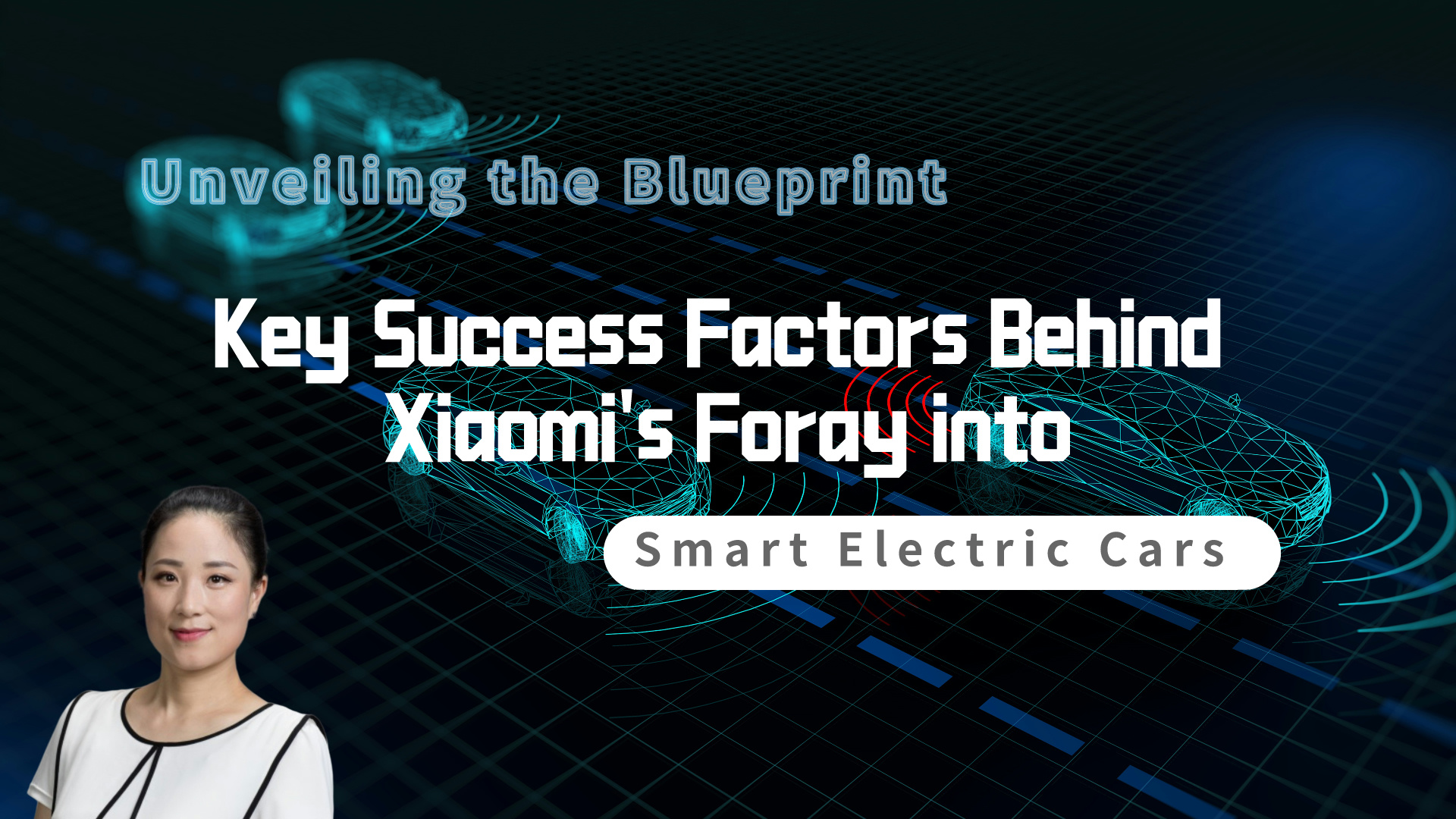Four Key Factors to Xiaomi Car’s Success Part 2
3. Extreme
Extreme Design
The concept of Xiaomi Auto’s philosophy in building cars is to pursue a driving experience that human and car synergy. The car can understand you and give you accurate and rapid feedback.

For example, Xiaomi Auto takes the sun protection function of the glass roof as its core breakthrough point. The picture below of a car owner in Guangzhou, fully armed and holding a sunscreen umbrella while sitting in a Tesla car once went viral in social media.

What did Xiaomi do to achieve sun protection?
- The glass roof of the Xiaomi car is made of double layer with silver, which blocks 99.9% of ultraviolet rays and 99.1% of infrared rays.
- The front windshield is more exposed to the sun than the glass roof, so Xiaomi made three layers of silver plating to achieve 99.5% ultraviolet isolation and 97.6% infrared isolation. This is the only sedan on the market that does three layers of silver plating.
- The four doors are made UV sunscreen layers. This layer blocks ultraviolet rays to 99.9%. If it is replaced by a sunscreen index, it is almost equivalent to 100 or PA four Plus.
Note: PA refers to Protection Grade of UVA, which is an indicator used to express the ability of sunscreen products to protect against UVA (long-wave ultraviolet rays).
The more “+”in the PA value, the stronger the sunscreen product’s ability to defend against UVA. PA+ means effective; PA++ means quite effective; and PA+++ means very effective. The higher the PA value, the stronger the effect of preventing sun tanning and skin aging.
How much sun protection does it have? Xiaomi has done the test and exposed the cars to the sun in a 38-degree summer day for 1.5 hours. Compared with the Tesla Model 3, the interior temperature of Xiaomi SU7 is 12 degrees lower.
Extreme Functionality
Battery Life of Xiaomi Cars
The battery life of an electric car is the key, and it is also the most expensive feature. The starting battery life of Xiaomi SU7 is 700 kilometers. Why 700 kilometers? Battery life is affected by various factors, mainly including temperature, and driving speed. Wind resistance is related to the square of the speed. The faster you drive, the more power you use.
In addition, it is also related to the owner’s driving habits. For example, slamming on the brakes or accelerator consumes electricity. The 700 kilometers is to ensure that car owners commute to and from work and only needs to charge once a week. Also, you can drive on the highway for at least four hours, because usually people need to take a break at a service station after four hours.
Xiaomi’s car was tested on a highway in Guangzhou with a speed limit of 120 kilometers and drove 495 kilometers at an average speed of 97.3 per hour. What’s more? The standard configuration of Xiaomi car tires is Michelin’s low rolling resistance tires.
Fast Charge
Xiaomi SU7 has also achieved the ultimate in fast charging, using a true 800-volt high-voltage platform with a peak voltage of 874. In fact, 550 volts or more can be called 800-volt platform, so some so-called 800-volt platforms have poor performance, mainly related to the charging speed.
The standard version of the Xiaomi car can cover 510 kilometers in almost 15 minutes.
The Ultimate Test
Before Xiaomi’s car was launched on the market, they carried out comprehensive tests in three hundred cities in China, with a total of 576 samples put in. The total mileage travelled exceeded 5.4 million kilometers, which is equivalent to 135 laps around the earth. The scale of this test was the largest among all vehicle model tests in China.
4. The Decisive Point of Smart Electric Vehicles — Xiaomi Car Intelligent Layout
The decisive point of smart electric cars is intelligence, and intelligence is Xiaomi’s strength.
Xiaomi’s intelligent autonomous driving has two sets of systems, one is called the broken version, the second is called the Max version. The broken version is pure vision, and the Max version is vision plus LiDAR. The two sets of solutions are being done at the same time, and both sets of solutions are self-research.
In addition, Xiaomi insists on using homologous technology solutions, so that different versions of the car can enjoy the latest results and experience. In the past three years the professional testing of automatic driving has accumulated more than 10 million kilometers, and at the same time, relying on Xiaomi’s cloud service capabilities, the scale of simulation testing has reached $250 million kilometers, so the number of test miles is sufficient.

Xiaomi is currently one of the few companies that has opened up the entire ecological closed loop of people, cars and homes, including smartphones, smart cars and smart home terminals, as well as its own entire operating system, forming a complete closed loop. For example, as soon as you get in the car, your phone and the car can be seamlessly connected without any additional operations. The icon of your phone will appear on the central control screen, and you can open it with one click. The phone is then on the screen and can be displayed in full screen.
Moreover, Xiaomi can also achieve car home interconnection. You can prepare your car in advance. You can talk to Xiaoai speaker at home. For example, you can turn on the air conditioner in advance before going out in summer. This feature especially adds voiceprint recognition to avoid naughty kids at home from making troubles.
In the car, you can also control your home smart devices through Mijia, and you can call the home camera to view the home situation in real time. When the doorbell rings at home, you can receive a notification in your car, and you can click to talk to see if someone is coming to deliver things.
Of course, it is too early to draw any conclusions about Xiaomi Auto’s prospects. Some industry insiders have suggested four time periods to assess the market performance of Xiaomi, so Let’s wait and see.
1. 7 days — Look at the back-order rate.
2. 3 months — Look at stable deliveries and operational capabilities.
3. 6 months — Look at its ability to “build blood” after the order stock is exhausted.
4. 6–8 months — Look at whether word-of-mouth fermentation can usher in a new sales peak.




